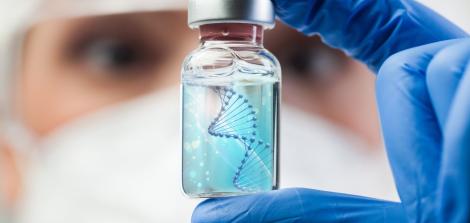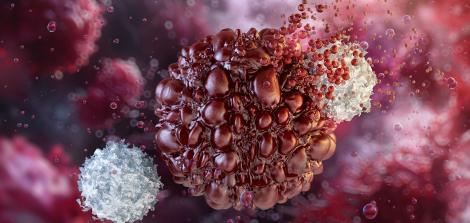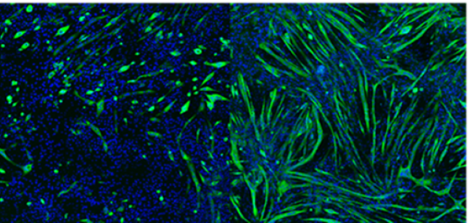How can a mathematical model lead to a cure for diabetes? An interview with Dr. Ron Piran
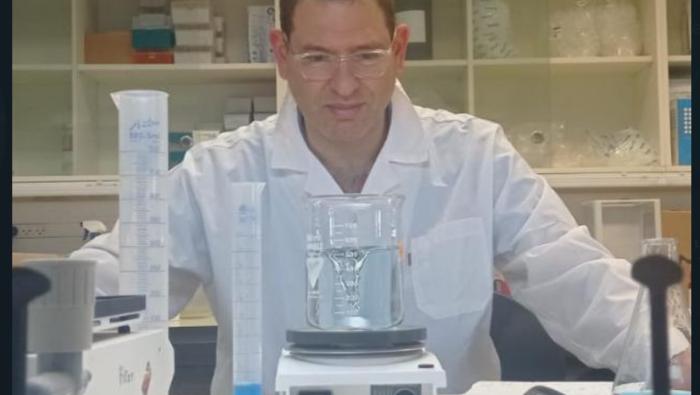
Dr. Ron Piran, a researcher at the Dangoor Center for Personalized Medicine and Bar-Ilan's Azrieli Faculty of Medicine in the Galilee, has been working in recent years on a mathematical model with a surprising application: groundbreaking diabetes treatment.
Dr. Piran’s path to diabetes research was far from conventional. “Researchers in my field usually come from a biology background, but I completed a PhD in chemistry, specializing in mathematical applications. Most of my doctoral work focused on developing molecular computing machines – we demonstrated that biological molecules could be used as small computers.”
At the time, the project seemed to lack practical significance. “Why did we do it? For the same reason that people created a nano-sized Bible: to prove that we could,” Dr. Piran laughs.
A medical breakthrough based on a mathematical model
It turns out that the molecular computer was not completely impractical after all. In fact, that “theoretical” project led to a medical breakthrough in biomedical research that has numerous practical and therapeutic implications.
“The paper summarizing the project was published in 2009 and was cited only 11 times – which is considered low; all of the citations were by mathematicians. Biologists are less fond of complex mathematics. Many of them don’t even understand what I’m talking about because the language I use is formal logic, which is a complex form of algebra,” notes Dr. Piran. "But", he adds with a smile, “if we manage to cure a real disease using the mathematical model, maybe they’ll realize it’s worth the effort to read that paper.”
So how does a mathematical model actually become medical research?
“What we created in the doctoral research, under the guidance of Prof. Udi Keinan in collaboration with Rami Reshef, was an ‘automaton’, a mathematical model that successfully predicted how a cell in a chick embryo would differentiate – whether it would become a muscle cell, a kidney cell, or another type of cell. We managed to create a computational method that predicts how a cell changes its differentiation based on its response to external signals. After that succeeded, I wanted to move on to a more complex system, one with signals produced by the system itself, not just in response to external signals. Such a system is the pancreatic cell system. All pancreatic cells secrete signals into their environment, like hormones that participate in regulating blood glucose levels. The complex signaling system of pancreatic cells is described by a ‘Turing machine.’”
Named after Alan Turing, the Enigma codebreaker?
“Correct. Turing is considered the father of computer science and the creator of the machine that cracked the Nazi encryption, which provided significant advantages to British intelligence during World War II. Mathematically speaking, the pancreas is the perfect organ to achieve the highest level of computational capability with a Turing machine. The mathematical model allows us to predict the events necessary to create each of the pancreatic cells, including the conditions required for producing insulin-secreting beta cells. In fact, the Turing machine we developed shows that the process is not one-way, and that it is possible to regenerate insulin-secreting beta cells even after they are destroyed, which is what happens in various forms of diabetes.”
The socialist model of sugar distribution to cells
To explain what goes wrong in diabetes, Dr. Piran begins by describing how food, namely glucose, is distributed among the cells. “Everyone has heard of the connection between diabetes and insulin and knows that diabetics suffer from high blood sugar levels. In Latin, the words Diabetes Mellitus mean ‘sweet urine,’ and one can only imagine what diagnostic methods were used in the ancient world. But this description is simplistic. To understand the problem in diabetes, one must understand the body’s food distribution system. When looking at colonies of individual cells, we see that cells that are close to the food grow. However, as we advance in the evolutionary scale, it becomes more complex, because if we want sensory organs, arms, a brain, etc., the body needs to separate between proximity to food and access to food.”
How does the body solve the problem of the digestive system’s distance?
“The solution that the body found is socialist, sort of like vouchers: insulin is the hormone responsible for distributing food to the cells. If food enters the body and a cell lacks insulin, the food won’t enter the cell; it will simply keep flowing in the blood. On the other hand, if insulin is secreted, channels within the cell will open, allowing food to enter. This system of channels is called ‘transporters.’ For a cell to receive the necessary food, two conditions must be met: first, there must be food in the blood, and second, there must be insulin. When a cell doesn’t have enough insulin, the food doesn’t enter, the cell remains hungry, and the food accumulates in the blood. The reason sugar accumulates in the blood is that the food doesn’t enter the cells, or the insulin signal doesn’t work well enough.”
And this is where diabetes comes into play?
“There are two main types of diabetes: Type 1 diabetes (juvenile diabetes) isan autoimmune disease in which the body attacks itself.
The pancreas contains small organelles called the Islets of Langerhans, within which the insulin-secreting beta cells reside. In type 1 diabetes, the immune system attacks the beta cells. The result is that there are no beta cells, no insulin secretion, and the other cells in the body are starved. The patient can die of starvation despite having plenty of food, namely sugar, in their blood.”
And what is type 2 diabetes?
“Type 2 diabetes involves two types of processes, which sometimes appear in combination. The first type primarily occurs in those who are overweight. Hormones, like insulin, function based on concentrations, and when body volume increases, the amount of hormone needs to increase accordingly for the system to function – meaning that the beta cells need to secrete much more insulin. Additionally, the internal organs in the body don’t expand in sync with weight gain. This type of diabetes develops in those who have been overweight for an extended period, leading to beta cells becoming exhausted and dying due to high insulin production.”
What about the type that also affects slim people?
“To understand this, think of coffee addiction. We all know how the effect of coffee wears off on us. Initially, when we start drinking coffee, it significantly improves memory and alertness, but over time, we need more and more coffee to achieve the same level of alertness. The same thing happens with insulin: some people develop insulin resistance, and their bodies require increasing amounts of insulin to achieve the same hormonal effect. Their beta cells have to work harder and harder, they don’t get a break, and they eventually die, leaving no other cells that produce insulin.”
The difference between a drug and a treatment
So that’s why diabetics receive insulin as a treatment?
“A drug is something you take that helps you recover. Insulin is not a drug; it’s a treatment. Eventually, all diabetics will become dependent on insulin. But if we can regenerate beta cells and restore their insulin secretion – then that would be a cure, not just a treatment.”
How do you regenerate damaged beta cells?
“There are various attempts to do this. For example, beta cell transplantation or tissue engineering – where cells are taken from the body, differentiated, turned into stem cells outside the body, and then reintroduced into the body as functioning cells. We, on the other hand, are trying to regenerate the beta cells within the patient’s body, without surgery or transplantation. In research terminology, this is called ‘regeneration.’ There is a significant group of researchers exploring this direction, and what makes us unique is our mathematical approach.”
How can mathematics help regenerate cells?
“In the Islets of Langerhans in the pancreas, in addition to the beta cells that secrete insulin, there are also other cells that secrete different hormones. It’s like a complex symphony. The mathematical model we developed, in collaboration with researchers from the University of Bucharest, allowed us to manipulate this mechanism and find a drug, which has already been approved by the FDA, that can control the level of the hormones secreted. The drug has been successfully tested on pharmacological models in synthetic systems, on diabetic mice, and on human Islets of Langerhans donated by organ donors. What’s left are a few small complementary experiments, and we will be able to publish the results soon.”
Diabetes: A global epidemic on the rise
Diabetes is a global epidemic: according to estimates by the World Health Organization, the number of people affected is expected to reach approximately 439 million by 2030.
“The number of people with diabetes is enormous and continues to rise. There are two main reasons for this. First, there is a lot of poor nutrition in the world. People don’t eat the essential nutrients because fresh meat and vegetables are very expensive, while pita bread, rice, and other carbohydrates are cheaper and more accessible- especially in places suffering from hunger and scarcity. It’s cheaper to buy snacks than a kilo of apples. Secondly, particularly in the Western world, we work sedentary jobs that primarily strain the brain, which only receives simple sugar as an energy source, so we eat sweets and gain weight. The average weight of a woman today is 76 kilos, the same as the average weight of a man at the end of the 1960s, while men weigh over 80 kilos. This type of lifestyle is fertile ground for the development of diabetes.”
Is beta cell regeneration treatment effective for both types of diabetes and all patients?
“We believe so. Since the problem in both types is a lack of beta cells, if we can regenerate them, we could treat all diabetics. However, there will still be challenges to address. In type 1 diabetes, for example, we will still need to deal with the autoimmune component. If I regenerate the beta cells and the immune system destroys them again, I’ve only provided a temporary solution. In type 2 diabetes, overcoming insulin resistance will require regenerating a very large amount of insulin, which will be challenging.”
Could the mathematical model help other patients besides diabetics?
“I believe so. There are many hormonal diseases to which this logic could be applied, and I won’t be able to implement all of the applications. I chose to research diabetes treatment, but for many other diseases, it will be even simpler, and it will be possible to use an automaton that describes the processes required to produce the missing cells. It’s important to me that the mathematical model becomes another tool in the researchers’ toolkit.”
A band of pioneers on the hill
Dr. Piran joined the Dangoor Center for Personalized Medicine at Bar-Ilan after six years of postdoctoral research at the Sanford Burnham Prebys Medical Discovery Institute in San Diego, California. He began his research journey as a doctoral student at the Technion’s Faculty of Chemistry, where he focused on computational methods for stem cell development in embryos. Since returning to Israel, he has lived with his family in Kfar Vradim in the Galilee.
Why did you choose the Azrieli Faculty of Medicine in the Galilee?
“Let’s start with the fact that after six years in San Diego, it was very important for me to return to Israel. You could call it Zionism, or you could call it family ties – these concepts, in my view, are inseparable. I didn’t even try to find work in the United States; I wanted to come back, and the offer I received from Bar-Ilan was generous. The lab was ready, and both my family and my wife’s family are from the north. In the beginning, there was a lot of charm in being a group of pioneers, a band of scientists on the hill. Now that’s starting to change because there are more and more of us, but we still spend time together after work.”
Why is the Faculty located in the North?
“The decision to establish Bar-Ilan’s Azrieli Faculty of Medicine in the Galilee has special significance. Geographically, it would have been easiest to set it up in Tel Hashomer, but its location in the North has national importance. The quality of healthcare in the periphery is lower than in the Center, so much so that, statistically, life expectancy in the Galilee is about four years lower than in the Center. The establishment of the Faculty in the Galilee aims to change this fact. Diabetes, in particular, is more prevalent in the North than in the center. This is also why the university decided to focus on this issue and established The Russel Berrie Diabetes SPHERE, that consolidates multidisciplinary efforts and even involves local councils in the fight against diabetes.”
How are you coping with the war in the North?
“The drive from Kfar Vradim to Safed passes north of Mount Meron, and if I don’t want to travel on that road, I have to make a big detour. We’re essentially living in the southern part of the new security zone. Kfar Vradim wasn’t evacuated, but some administrative and academic staff members were relocated to the Kinneret area – a beautiful place, but they’re starting to get antsy there too. Many reservists were called up, leaving behind wives who need to work or study. This is happening all over the country, but we have to admit that in the north, it creates heightened tension.”
Finally, what do you think diabetes treatment will look like in ten years?
“These processes take a long time. The FDA operates very slowly, due to regulatory mechanisms that are important, but as we saw with COVID-19, it’s possible to rally and accelerate processes. If the FDA had operated at its usual pace, RNA vaccines would have only come into use in 10-15 years, but because of the pandemic, they allowed parallel processes without waiting for the results of the previous stage, which significantly shortened the waiting time. In contrast, diabetes is considered a chronic disease that doesn’t kill quickly, so there’s no rush to expedite processes. I hope that by the end of my career, this technology will be in medical use.”
Could it be that by then, researchers will develop more uses for the mathematical model?
“That’s my dream. Most researchers dream of curing a disease, but what I want is for people to listen to my theoretical mathematics and realize it has value,” Dr. Piran laughs.
Last Updated Date : 05/01/2026
